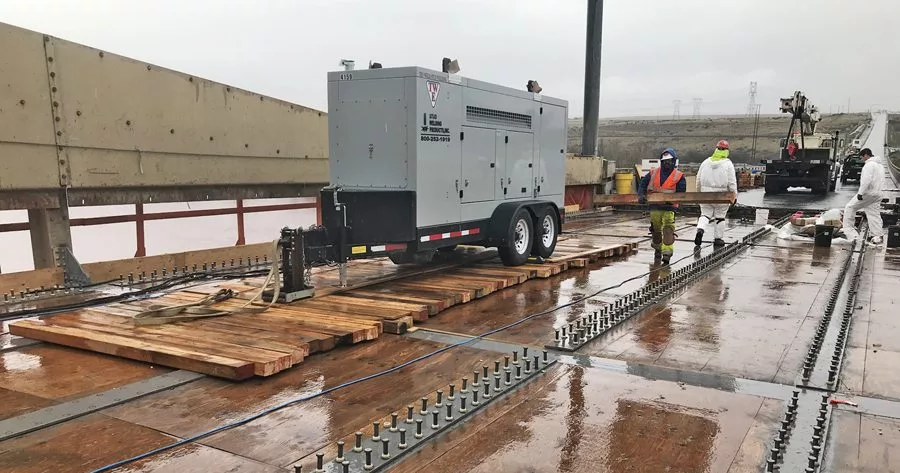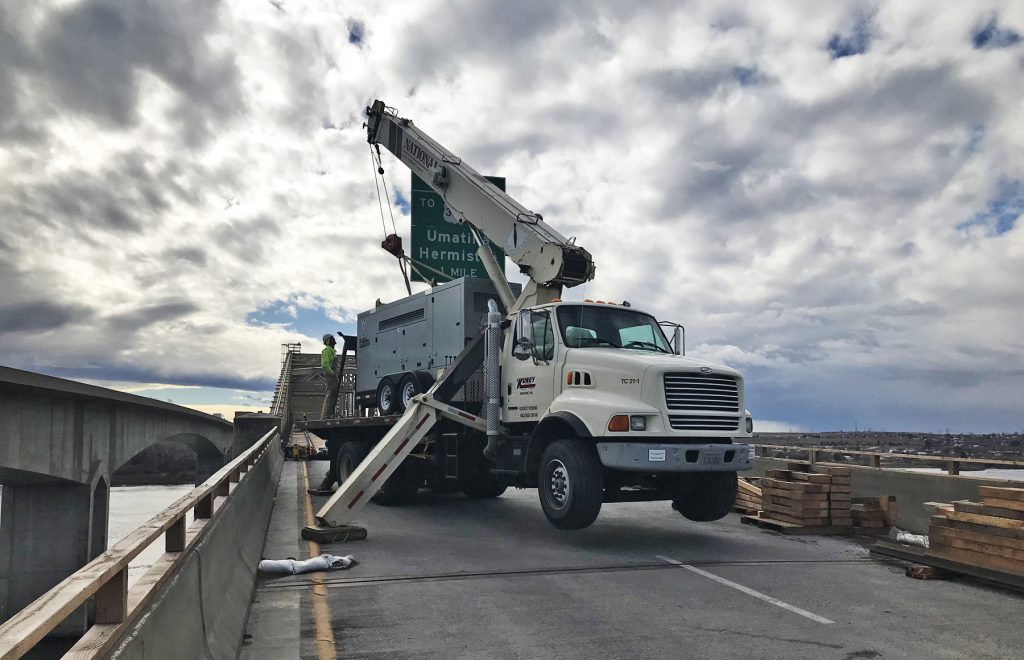
Home » State gears up to build rock fence, improve I-182, Highway 12
State gears up to build rock fence, improve I-182, Highway 12

April 12, 2018
Work is expected to begin in May on the biggest rock fence in Washington state’s history—and it’s not along the slopes of Snoqualmie Pass but along Highway 730 south of the Wallula junction.
“That whole stretch from the Oregon border to the Wallula junction, there’s boulders in the ditch and there have been cars and trucks that have been hit by rocks,” said Alex Sanguino, Tri-Cities Department of Transportation project engineer for the south-central region.
The $3.6 million project will be broken into two phases. During the first phase, which will last about seven months, three grate-like nets will act as a fence to prevent rocks from falling onto passing vehicles. Other areas around the state have used rock fencing material but have also used blasting and scaling. That makes this project the largest statewide fencing project to date, Sanguino said.
Workers will have to drill anchors into the terrain at a depth of at least 15 feet to ensure the fencing doesn’t rip out.
The second phase covers a longer section of slope but a smaller work area. Nets and scaling also will be used in the second phase, which is expected to be completed by winter.
L.R.L. Construction Co. of Tillamook, Oregon, is the contractor for the project.
The DOT’s south-central region covers an extensive geographic area, including Benton, Franklin, Yakima and Walla Walla counties. Though nine percent of the state’s population lives within its boundaries, the region contains 16 percent of the state’s highways and 540 bridges—and there is never a shortage of projects on hand.

I-82 bridge
Other projects on the horizon for this spring include major work on the Interstate 82 Columbia River Bridge, because it’s showing signs of deterioration due to normal wear and age
Built in 1955, the bridge connects Washington to Oregon at Umatilla.
At nearly 3,300 feet in length, the deck is in need of repair, and workers have already started replacing the deck bridge in sections and rehabilitating critical steel components to improve safety.
The $7.5 million to $10 million project is being done by Spokane-based Kuney Construction. Work will continue through this fall.
Richland projects
A paving project to fix deteriorating wear and tear at the Highway 240, George Washington Way and Queensgate interchanges at Interstate 182 is set to begin in May.
Construction will be done by Richland-based Inland Asphalt Co. and will run from May until the end of summer. It’s expected to cost about $3.3 million.
Because it’s such a high-traffic area, Sanguino said the work will take place at night, starting at 9 p.m. and ending at 5 a.m.
Construction on two $3.9 million Queensgate roundabouts, which was scheduled to begin in March, is expected to begin in April, according to city officials. The city of Richland is working with DOT on the project.
One roundabout will be at the Queensgate-Columbia Park Trail intersection, and the other at Queensgate and the eastbound I-182 ramps, just south of the bridge over the interstate.
The more traffic a roadway sees, the quicker the concrete will break down.
Michael Adams, DOT assistant project engineer in the Richland project engineering office, said officials are using a coring machine to take samples from areas showing asphalt distress.
“That’s how we determine what kind of shape a road is in. Sometimes the cracks aren’t very deep. We figure out what areas are of concern and how much to remove,” Adams said.
Samples are taken constantly throughout the region, but not constantly in one spot. Adams said DOT is watching a specific section on Highway 395 from Mesa to Pasco.
“That section has some wear on it, and we’re keeping an eye on it. That project is coming up next year,” he said. “There’s another one on U.S. 12 right through Burbank just past the Snake River. That’s on the agenda for next year.”
Highway 12
Highway 12 also is about to undergo phase seven of an eight-part plan to create a divided four lanes of traffic. This phase includes an 11-mile stretch to help the flow of traffic from the Tri-Cities to Walla Walla.
Sanguino and Adams agree it’s one of the most exciting projects on the docket.
“We don’t have to deal with traffic,” said Sanguino, who said once it’s done, it’ll create two new lanes for safety.
Because a barrier separates the new construction from the current lanes of road, Adams said that the construction project is safe for DOT workers, too, as they do not have to detour traffic or worry about distracted drivers.
“That’s our No. 1 concern,” Sanguino said. “We emphasize that we need to be safe out there and watch out for everyone.”
Sanguino said whenever someone calls in about a section of road that might need improvement, a crew goes out to check. Public outreach is sometimes even solicited in cases such as the Highway 395 Safety Corridor Improvement project.
In 2015, the Legislature provided funding for the DOT to make safety improvements between Pasco and Ritzville along Highway 395, which encompasses a 40-mile stretch.
This project — a critical freight corridor — will add acceleration and deceleration lanes, improve existing left turn lanes, and add safety improvements between Pasco and the Franklin County line north of Connell to reduce congestion and the risk of collisions.
Construction contracts for this project won’t be advertised until next year, according to DOT.
Adams said the south-central region has been working with a consulting firm to help with public outreach.
“We’re going to have some open houses to gather input on which intersections need improvement. We have this safety corridor area; we want to know what the public wants,” Adams said.
County, city and state officials, as well as businesses along the corridor, will be asked to provide input, then public meetings will follow to gather more feedback. No public meetings have been scheduled yet.
Local News Transportation
KEYWORDS april 2018





